Mixed Flow Fans: Versatile Solutions for Diverse Ventilation Needs
Mixed flow fans have become a critical component in modern ventilation systems across industrial, commercial, and infrastructure projects. As a leading manufacturer in the field, Zhejiang Shuangyang Fans Holding Co., Ltd, offers three fundamental types of mixed flow fans, each tailored to specific application needs and installation conditions—normal type without integrated silencers, inlet/outlet silenced type, and integrated cabinet type with flexible airflow direction.
What Is a Mixed Flow Fan?
A mixed flow fan combines the aerodynamic features of axial fans and centrifugal fans. Air enters axially but is expelled at an angle, allowing for higher pressure generation than axial fans and higher flow rates than centrifugal fans. This balance makes mixed flow fans highly efficient, compact, and suitable for medium-pressure ventilation systems.
Mixed flow fans are often used in applications requiring moderate pressure and airflow efficiency, such as factories, commercial buildings, and HVAC systems.
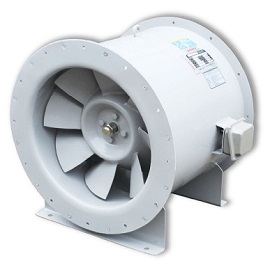

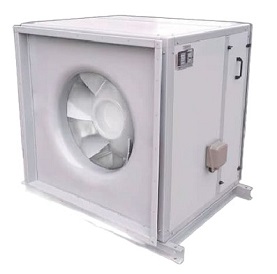
Type 1: Normal Mixed Flow Fan Type 2: Mixed Flow Fan with Integrated Inlet & Outlet Silencers Type 3: Cabinet-Type Mixed Flow Fan
Type 1: Normal Mixed Flow Fan (Open-Frame, No Integrated Silencers)
The open-frame mixed flow fan is a straightforward design that omits integrated silencers. It features a durable housing and a mixed flow impeller optimized for maximum airflow and efficiency.
Key Features:
-
Ideal for installation in acoustically tolerant environments like industrial plants or underground utility spaces.
-
Offers a high volume flow rate with reasonable pressure development.
-
Compact design, easy to install and maintain.
Application Scenario:
Used where noise control is not a primary concern, such as mechanical rooms or remote industrial facilities with low noise sensitivity.
In noise-tolerant environments, performance and efficiency are prioritized over acoustic comfort, which makes this type of fan cost-effective and easy to deploy.
Type 2: Mixed Flow Fan with Integrated Inlet and Outlet Silencers
To meet acoustic performance standards in urban or commercial environments, this model features built-in silencers at both the inlet and outlet. These silencers effectively reduce noise levels while preserving aerodynamic efficiency.
Key Features:
-
Integrated silencer segments reduce sound power levels at critical frequencies.
-
Minimizes the need for external sound attenuation ducts.
-
Suitable for indoor installations, including public or commercial buildings.
Application Scenario:
It's widely used in highclass civil building and kinds of factories, mills, plants etc., for ventlation & exhaust. If conveying acid, alkaline and other corrosive gas, the fan can all be made of FRP.
Type 3: Cabinet-Type Mixed Flow Fan with Flexible Airflow Direction
The cabinet-type mixed flow fan features a fully enclosed box structure that allows customizable airflow direction at both inlet and outlet. This flexibility makes it particularly suitable for complex installation environments with spatial constraints.
Key Features:
-
Box-type enclosure with internal acoustic lining.
-
Customizable inlet/outlet directions: top, bottom, side, or combined.
-
Modular structure for easy integration into ventilation systems.
-
High static pressure and low noise emissions.
Application Scenario:
Ideal for high-end civil buildings, retrofitted mechanical rooms, or industrial sites with non-linear duct routing. This model allows engineers to adapt fan installation without redesigning ductwork.
Selecting the Right Mixed Flow Fan for Your Project
Choosing the right type of mixed flow fan depends on several factors:
-
Acoustic requirements: Use silenced or cabinet-type fans for noise-sensitive environments.
-
Spatial constraints: Cabinet-type fans allow flexible ducting configurations.
-
Airflow and pressure needs: All types support moderate pressure and high flow, but performance specs should be matched to the system requirements.
By aligning these factors with the fan type, engineers can ensure optimal performance, lower lifecycle cost, and regulatory compliance.
Conclusion
The versatility of mixed flow fans lies not just in their aerodynamic profile but also in their structural variations. Whether it’s a simple open-frame for industrial utility, a silenced model for commercial buildings, or a modular cabinet-type for high-end customized projects, SHUANGYANG FAN provides tailored solutions to meet diverse airflow and installation requirements.
Understanding the differences among these three types can significantly aid in the proper selection and application of mixed flow fans in complex engineering projects.
The content of the article cannot avoid omissions and errors. Welcome to propose corrections.
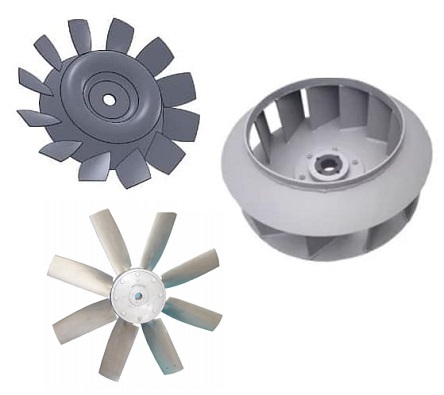 Libere el poder del ventilador de gabinete
Libere el poder del ventilador de gabinete
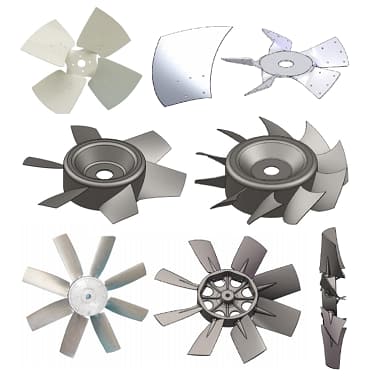 Ventilador axial industrial: Cómo mantener una circulación de aire adecuada
Ventilador axial industrial: Cómo mantener una circulación de aire adecuada
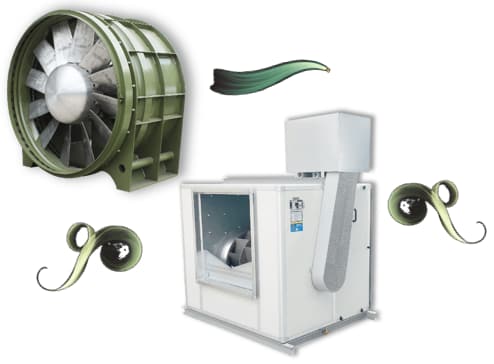 Ventilador de ventilación industrial: manteniendo una buena calidad del aire
Ventilador de ventilación industrial: manteniendo una buena calidad del aire
 Ventilador a prueba de explosiones: garantizando la seguridad en entornos peligrosos
Ventilador a prueba de explosiones: garantizando la seguridad en entornos peligrosos

